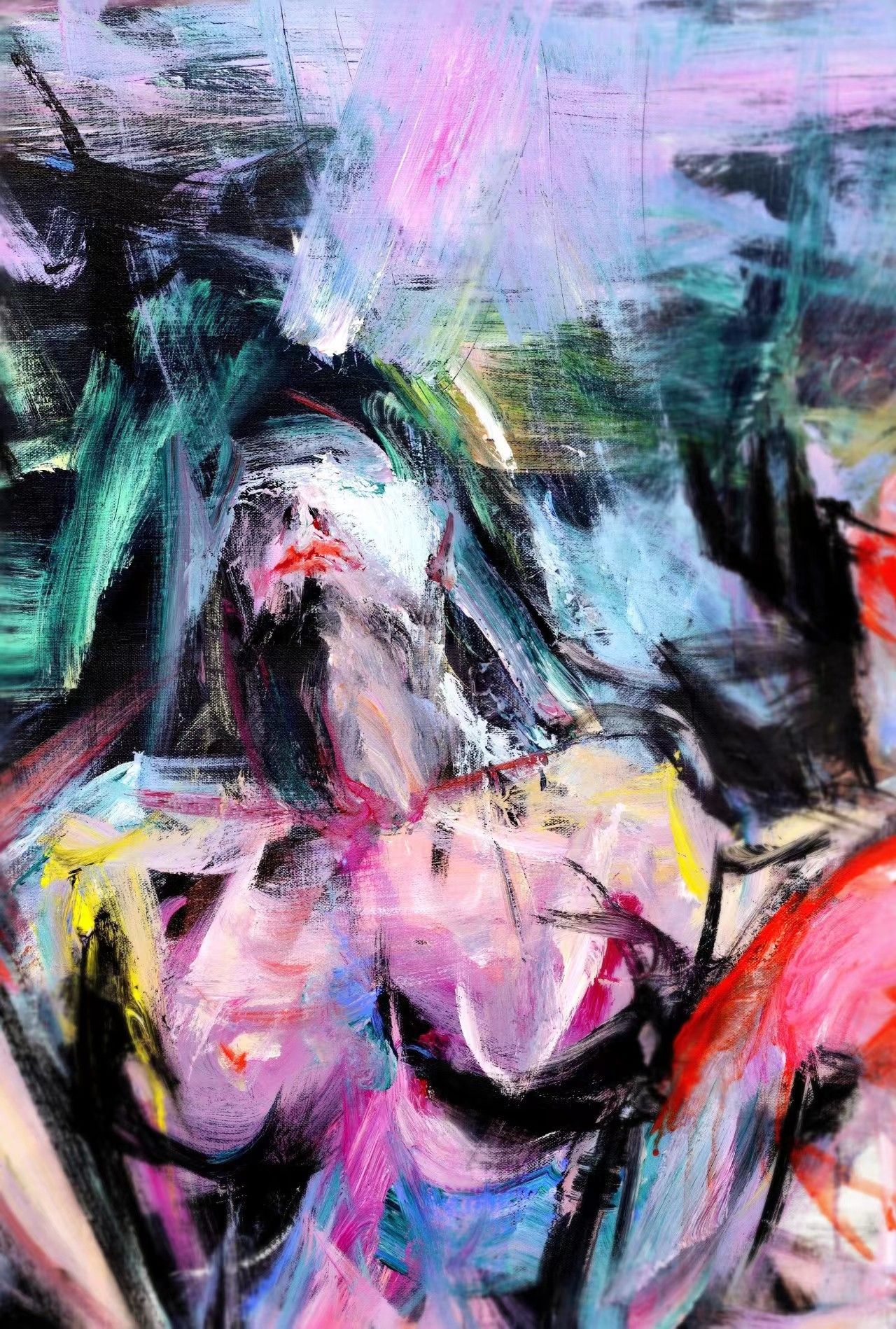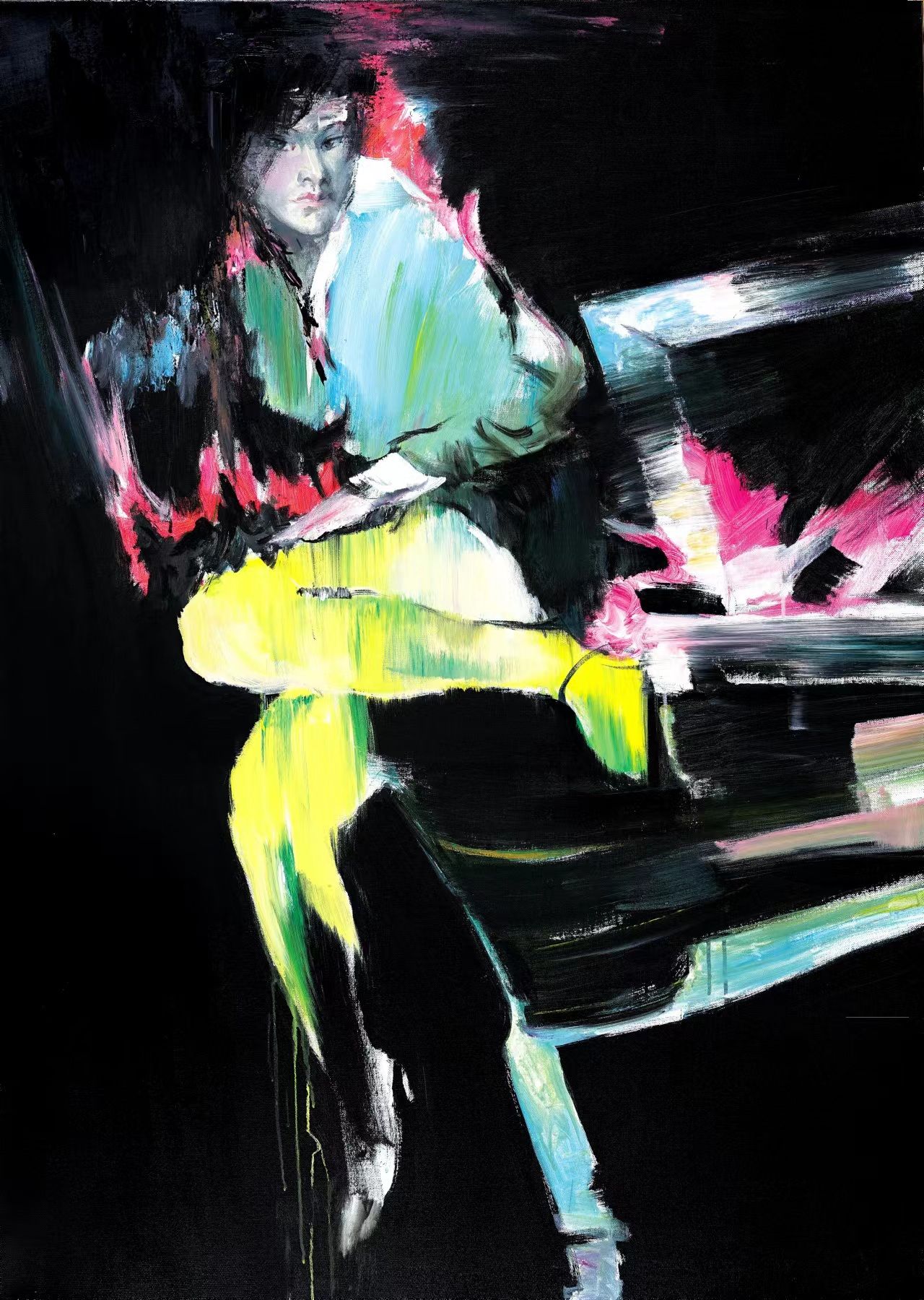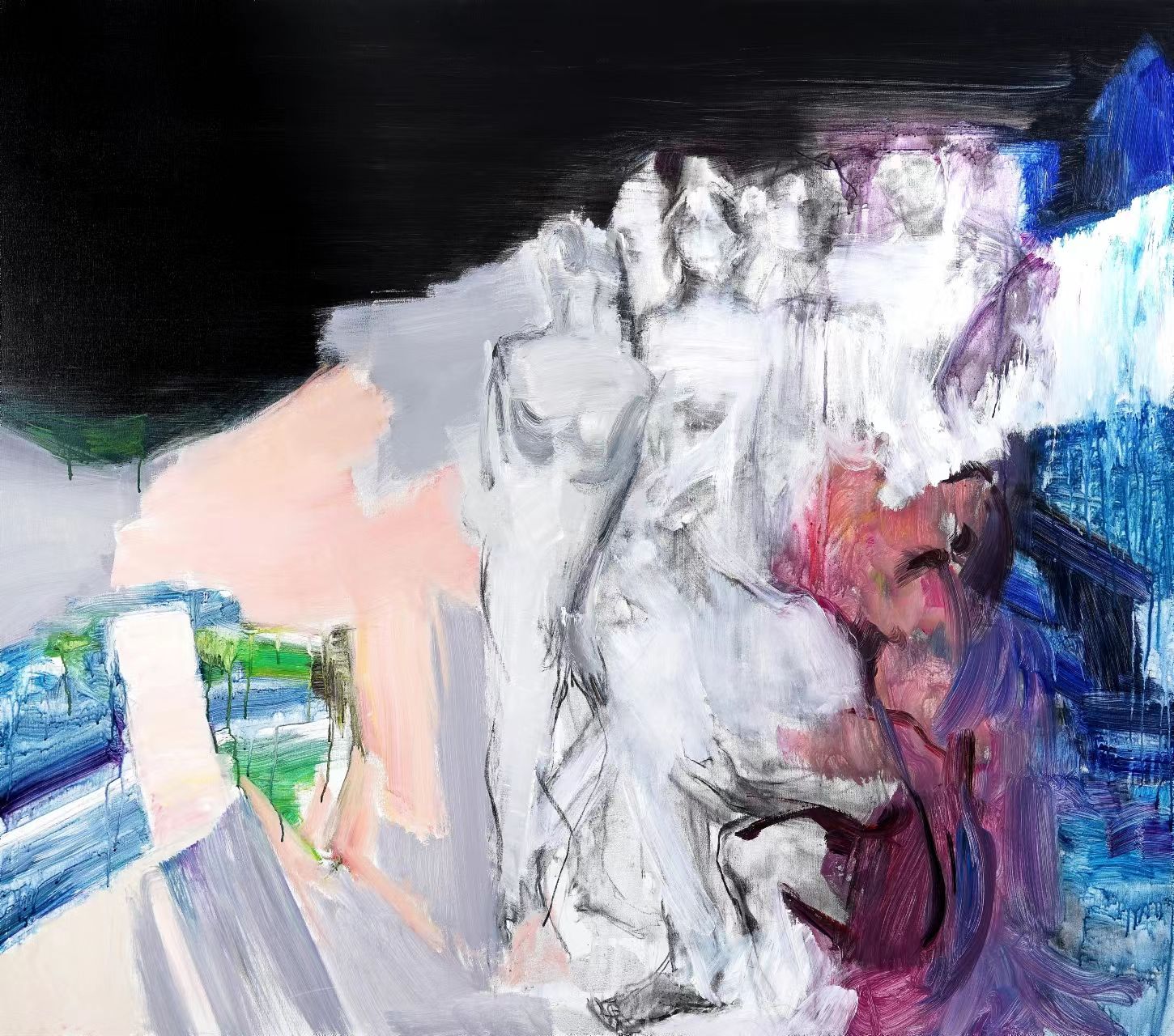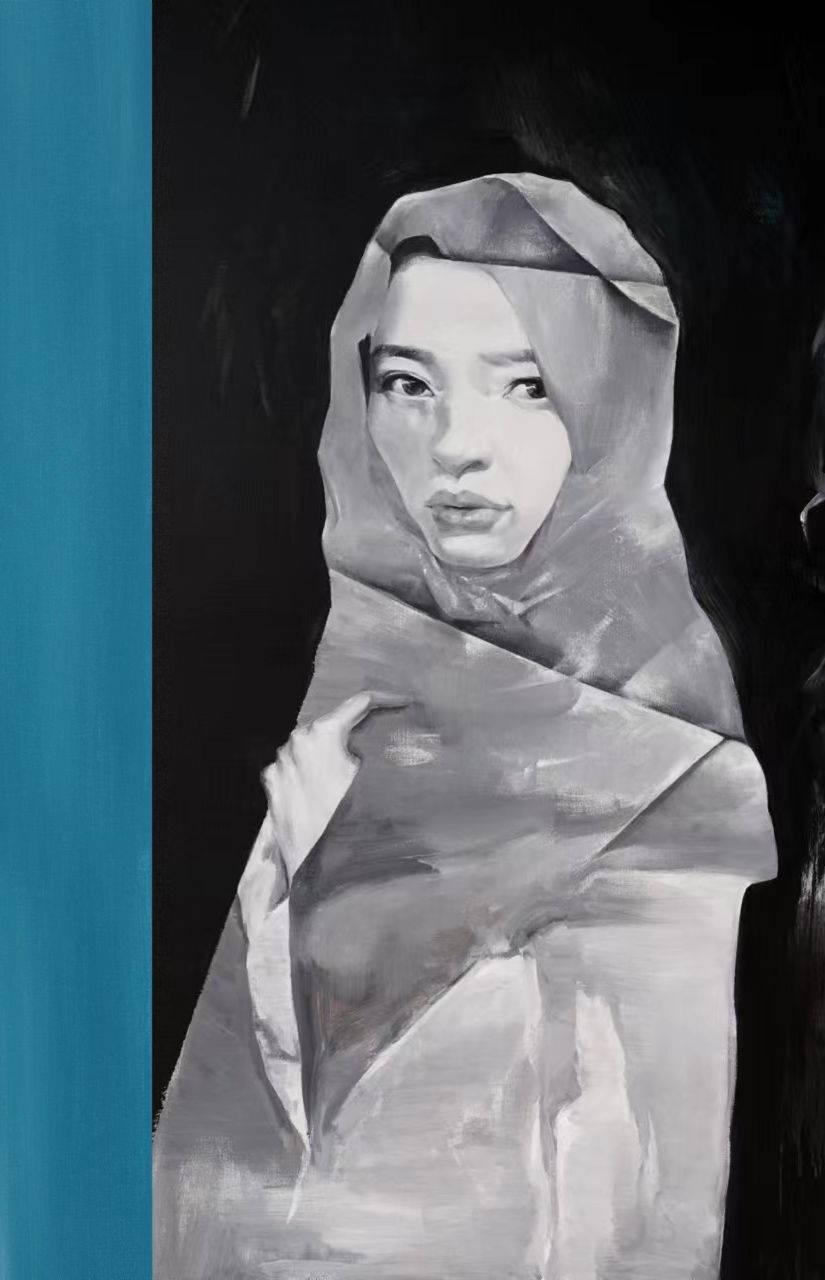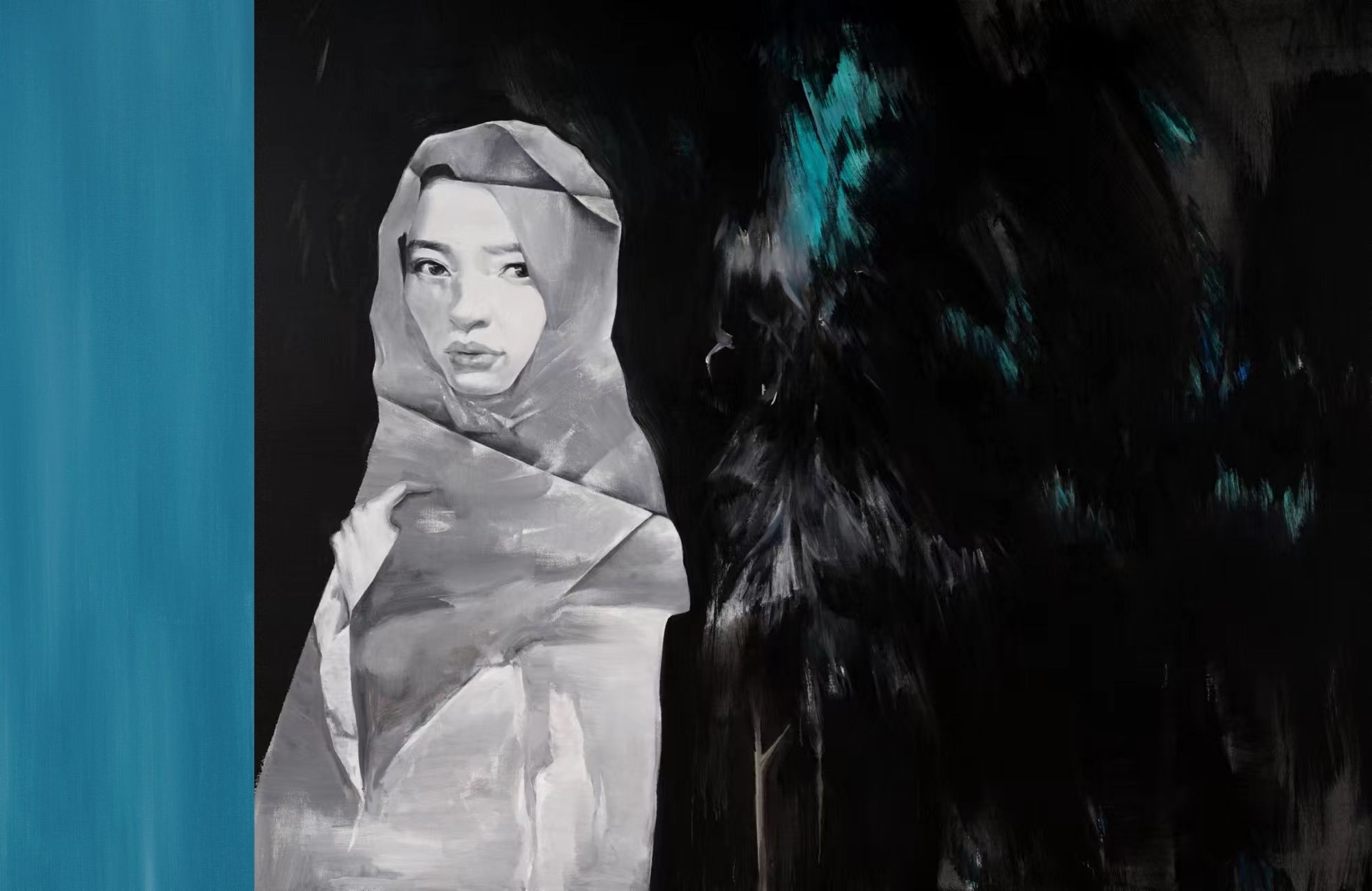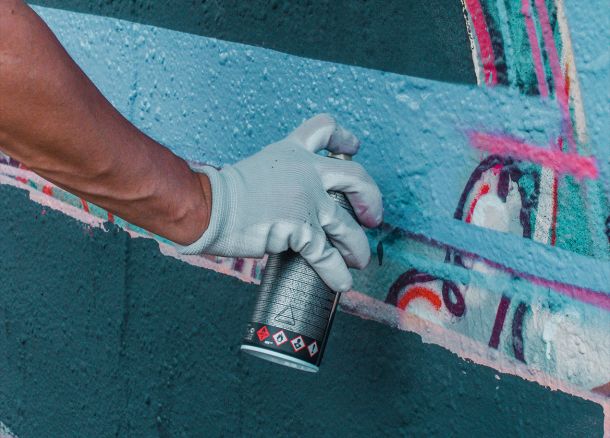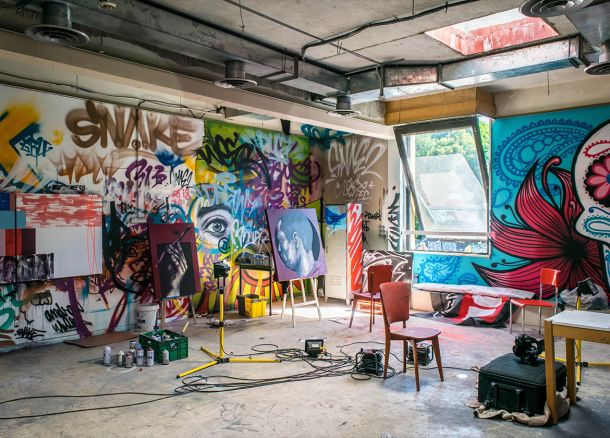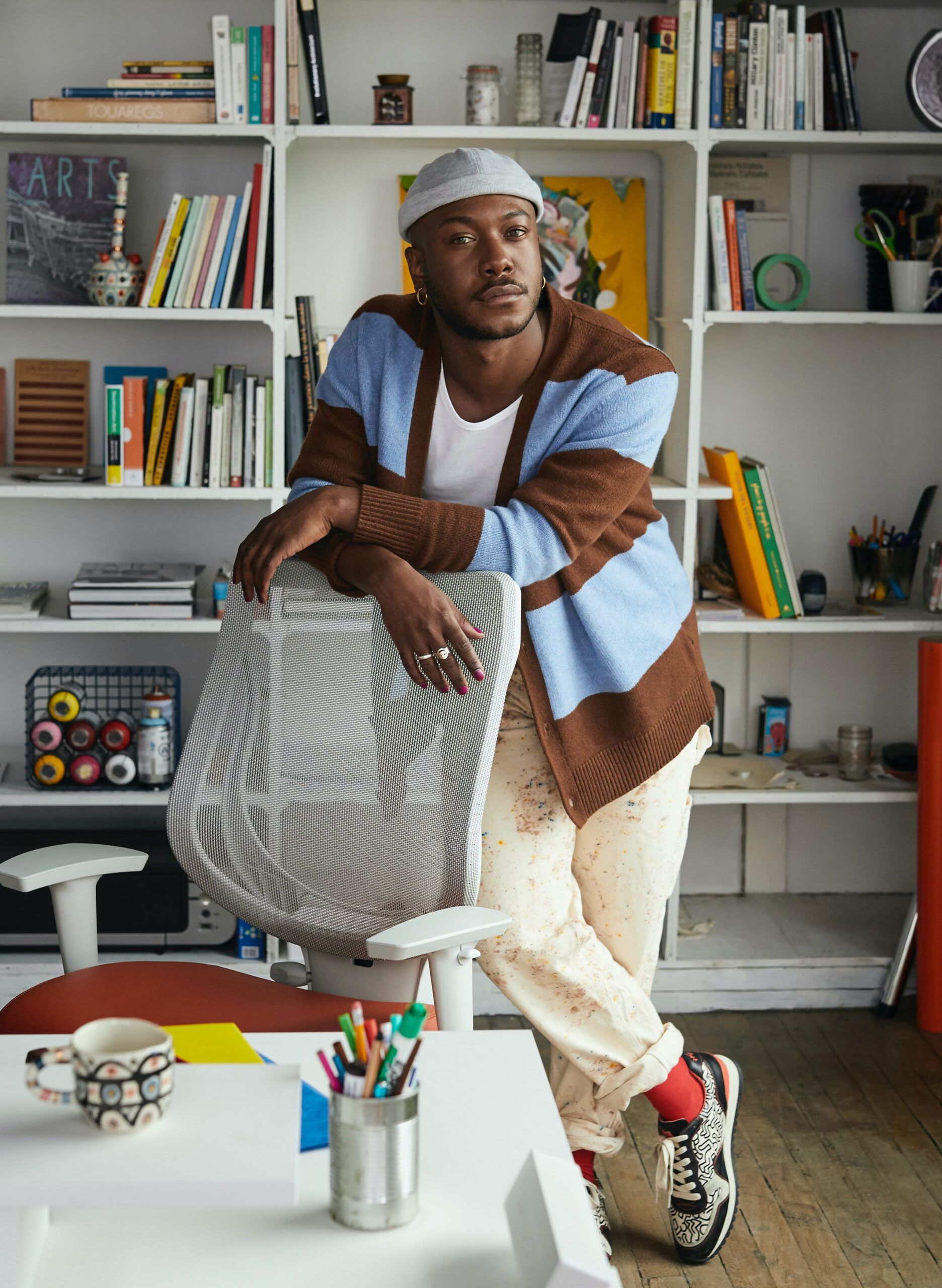
THE TEMPTATION OF ALIENATION
After the large-scale solo exhibition “The Temptation of Alienation,” Yu Runde is now showcasing his new series “Invisible Flame” at Today Art Museum. The theme keywords for this exhibition can be summarized as: contemporary humanity, female embodiment, gaze, and feminine aesthetics.
In his previous explorations and accumulations, Yu Runde combined expressive and abstract formal language with the writing and imagery of ink art. This fusion created a style that boasts free expressive tension while retaining an understated individuality. Through rigorous and effective practice during this period, he has transcended the institutionalized framework of contemporary oil painting, making his position and distinctiveness clear. His achievements are attributable not only to his long-term experience in art education and reflection but also to his relentless experimentation with artistic language.
Regarding the former, his role as a leader in advanced art training at Tsinghua University’s Academy of Arts, a venture both avant-garde and forward-looking, provided him with empirical experience in holistic observation, value judgment, and conceptual innovation. The latter, however, represents a critical self-education, foresight, and correction, essential for anchoring the artist’s subjectivity in the wholeness of mind, emotion, and will, forcefully countering the nihilism, alienation, loss, and fragmentation of postmodern and post-historical existence.
This approach has effectively ensured the continuous innovation of his painting’s formal language through trial and error. Structurally, Yu uses gray and black as the main tones, harmoniously integrated with pure colors in localized segments, creating a seamless flow. The purity and straightforwardness of his work, unembellished and unpretentious, are met with a transparency that injects a sense of ambiguity, detachment, and measured abstraction. The interplay of reality and illusion forms an intentional realm, balancing intellectual restraint with vibrant emotional tension, urging viewers to empathize, project, contemplate, and gaze into the hesitant, wandering male and female figures within his scenes. Yu’s practice illustrates that the creation of formal language relies not merely on the representation of social reality but also on psychological reality, subconscious reality, and the invisible contemplation of truth. All this creative language is inseparable from a technically diverse approach, and Yu Runde excels markedly in this among his contemporaries. His new works extend and deepen the aforementioned explorations. What is particularly enlightening is that his “contemporaneity” in painting is not confined to an attitude or textualized concept but is rather driven by spontaneity, delving into the abyss of mirrors, exploring the remnants of beauty, and reflecting on and purifying a childlike innocence. This exhibition’s theme and works employ the female body to broaden a feminine aesthetic perspective, revealing to us those unfamiliar sensations, imaginations, and the truths of the mind under the domain of consciousness. When we gaze at the scorching hues of his oils, the rhythm that confronts us is neither gentle nor melodious but resembles a hoarse voice, a potent and stealthy echo accompanying those elusive specters and body without organs, traversing social and discursive spaces, the unseen…
Is the female body a battlefield—a stage for eroticism, a symbol of libido consumption, or a place for the revival of subjectivity? Strict critical discourse from feminism has explained and questioned their existence, becoming an essential methodology. So, as a contemporary gender issue, is a feminine aesthetic sentiment possible in the works of a male artist? How can the beauty and eternity of the female form be articulated, represented, and constructed after being disenchanted by various “isms”? How can this be represented and clarified through individual, handcrafted painting language?
These are precisely the issues Yu Runde is concerned with. He grasps the tension in interpretation, in the non-structural game of alienation and temptation, and the contradiction of irony and affinity. Simultaneously, in a dance-like gender social metaphor, he brings these topics to the forefront, inviting viewers to participate, gaze, and enter the dimension of “I think.” This “I think” remains hidden, thus tending towards de-gendering and even de-ideologizing.
The invisible flame of the spirit illuminates the dark tunnels of consciousness and shines brightly on the receding horizon of virtue, enlightening and guiding.
Is the female body a battlefield—a stage for eroticism, a symbol of libido consumption, or a place for the revival of subjectivity? Strict critical discourse from feminism has explained and questioned their existence, becoming an essential methodology. So, as a contemporary gender issue, is a feminine aesthetic sentiment possible in the works of a male artist? How can the beauty and eternity of the female form be articulated, represented, and constructed after being disenchanted by various “isms”? How can this be represented and clarified through individual, handcrafted painting language?
These are precisely the issues Yu Runde is concerned with. He grasps the tension in interpretation, in the non-structural game of alienation and temptation, and the contradiction of irony and affinity. Simultaneously, in a dance-like gender social metaphor, he brings these topics to the forefront, inviting viewers to participate, gaze, and enter the dimension of “I think.” This “I think” remains hidden, thus tending towards de-gendering and even de-ideologizing.
The invisible flame of the spirit illuminates the dark tunnels of consciousness and shines brightly on the receding horizon of virtue, enlightening and guiding.
